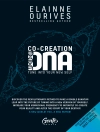The two parts of this volume feature seventeen and six extended conference abstracts corresponding to selected talks given by participants at ‘Joint CRM-Imperial College Workshop in Complex Systems’ and ‘Emergence, Spread and Control of Infectious Diseases’ respectively, both held at the Centre de Recerca Matemàtica in Barcelona in spring 2013. Most of them are short articles giving preliminary presentations of new results not yet published in regular research journals. The articles are the result from a direct collaboration among active researchers in the area after working in a dynamic and productive atmosphere. Almost everything that is interesting and important for society is complex; here, examples scattered across science are presented in order to illustrate the cross-disciplinary richness of state-of-the-art complex systems research: fracture avalanches and rain showers that mimic earthquakes; highly organized graphs that account for processes in neural networks, metabolic networks, food webs, or language; models for DNA dynamics; or statistical methods to test complexity in the form of structure along many different scales. The mathematics is put to work for the modeling of the real system, and the models are kept at a minimum level to allow the understanding of the essentials of the real system. The book is intended for established researchers, as well as for Ph D and postdoc students who wish to learn more about the latest advances in these active areas of research.
表中的内容
Part I: Joint CRM-Imperial College Workshop in Complex Systems.- Foreword.- Mesoscopic models for the overstretching transition of DNA.- Criticality on rainfall: statistical observational constraints for the onset of strong convection modelling.- Testing universality and goodness-of-fit test of power-law distributions.- Stability of strength and weight distributions for time-evolving word co-occurrence networks.- Single infection epidemic spreading model.- Niche dimension as an emergent property of food-web structure.- Modelling the population dynamics in a cell culture at two different scales.- Assessing the significance and predicting the effects of knockout cascades in metabolic networks.- Stochastic amplification in neural networks.- Evolutionary dynamics of the genotype-phenotype map.- Spatio-temporal patterns in a large-scale discrete-time neuron network.- A cavity method approach to DNA stretching.- Idiosyncrasy as an explanation for power laws in nature.- Symmetric division model of cell differentiation systems.- Free energy landscape analysis of mesoscopic model for finding DNA-protein binding sites.- Are first order phase transitions possible in disordered low-dimensional non-equilibrium systems?- Labquakes: acoustic emission during the compression of porous materials.- Part II: Emergence, Spread and Control of Infectious Diseases.- Foreword.- Global properties of a core group model for sexually transmitted infections.- Incorporating landscape heterogeneities in the spread of an epidemic in wildlife.- The phenomenon of apparent disappearance in the marine bacteriophage dynamics.- Viral RNA replication modes: evolutionary and dynamical implications.- System order reduction methods with application to a bacteriophages dynamics model.- Viruses and their role in the ocean: bacteriophages and bacteria interactions.












